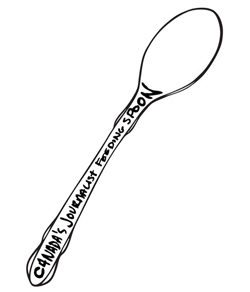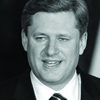The Case of the Abandoned Shoe Store

illustration by: Ahmed Kassem
Directly across from the western block of Parliament Hill stands the National Press Theatre at 150 Wellington Street, the traditional site of news briefings for every prime minister since Lester B. Pearson in 1965. Because of an ongoing feud with the national media, however, Prime Minister Stephen Harper has only set foot in the gallery once.
For over a year, the Conservative government and Privy Council have been planning a second media centre that would be under their control, one-and-a-half blocks fromthe existing press gallery. The centre, which would be run by the Privy Council Office instead of journalists, had a secret code name: the Shoe Store Project. Then the plans were discovered, sending ripples of anger through Canadian journalists, who viewed it as the latest move in Harper’s bid to create a controlled interview environment.
On October 15, Tonda MacCharles of the Toronto Starbroke the story after receiving a report she filed for under the Access to Information Act almost exactly one year earlier. The documents revealed a full outline of the needs for the centre’s interior that included a stage or riser, comfortable seating for 40 to 80 people, security at the back and front doors, electronic feeds for sound, sound boards, simultaneous translation space, phone-in capacity, proper lighting for cameras, tables for handouts, products, glasses, water, flags, backdrop, photocopier, full work stations with internet hook-up, a large-capacity printer in the back for officials to use and washroom facilities.
What remains unclear is why a new media centre is needed. One document states that Harper “needs to put in place robust physical and information security measures to protect the prime minister and cabinet.” This has left many wondering exactly what information security procedures are needed in a public press conference. A hand-drawn sketch among the documents, which depicts a space for “permanently installed cameras with feeds to media,” has left journalists fearing the worst. “Obviously, if the only tape you can get is tape someone has shot who has a vested interest in the situation, then that organization is going to give you tape favourable to their position,” says Christopher Waddell, a professor of journalism at Carleton University.
When asked about the cameras, Privy Council Office spokesperson Myriam Massabki replied, “no comment.”
The next day, MacCharles wrote a follow-up article that was headlined: “Government Shelves Media Centre Plan.” Massabki says the “exploratory” project was rejected by the Privy Council last fall for two reasons. “The main reason is the accessibility of the place. As an example when we put in place a media centre that attracts media journalists, they need a big parking lot for their trucks and cars and things like that.” The other is its cost.
One opposition party critic doesn’t believe money is the issue. “In a context of a government that spends billions of dollars a year I don’t think that is really their financial concern,” says Mark Holland, Liberal MP for the riding of Ajax-Pickering. “When their plan got leaked it was dramatically unpopular, so they backtracked in an awful hurry.”
“Harper is going to have to do two things,” continues Holland. “One, get thicker skin and be willing to answer those hard questions. Two, accept that he’s not a dictator. Behaving like one is not going to keep him in office.”
Since the Conservative party won power in February 2006, members of Harper’s staff have tried to control its dealings with the press numerous times. Shortly after the election, Harper stopped publicizing Tory cabinet meetings and barred journalists from the hallway outside the cabinet room, effectively blocking them from questioning cabinet ministers on their way out of meetings. On May 23, 2006, journalists walked out of a press conference right before it started when Harper announced that Canada would give $40 million to aid Darfur. Earlier, Harper’s deputy press secretary, Dimitri Soudas, had tried to set up a list of reporters who wanted to ask questions. Anyone on the list could be called upon to ask Harper a question. No reporter took up Soudas on his offer. “Unfortunately,” Harper told London’s A-Channel the next day, “the press gallery has taken the view they are going to be the opposition to the government.”
But it has been traditionally understood that the media’s responsibility is to ask questions of the governing party, no matter which party governs. Yves Malo, a director and former president of the press gallery, says Harper has to stop seeing journalists as his enemies. “They have to stop thinking we are there to attack the government.”
Sandra Buckler, Harper’s director of communications, often bears the brunt of the press gallery’s flak. During a meeting between the PMO and press gallery executives in March 2006, Buckler suggested that the foyer of the gallery would make an ideal interview location. It would be called “The National Press Theatre,” she told Emmanuelle Latraverse, then-president of the gallery. Buckler did not return phone calls for this story.
Whether or not the Shoe Store Project ever gets built might not be the real issue. Waddell believes the controversy only obscures the real need, which is for journalists to dig deeper and not be content to receive spoon-fed stories from the government. “I’m not sure a new media centre is an issue that plays anywhere else other than reporters,” he says. “The public doesn’t care.”
“Journalists should do their jobs of going out and finding good stories,” Waddell continues. “Whether the PM wants to talk to you—whether the PM likes you—is immaterial to doing your job.”
Nathan Crocker was the Head of Research for the Summer 2008 issue of the Ryerson Review of Journalism.









































